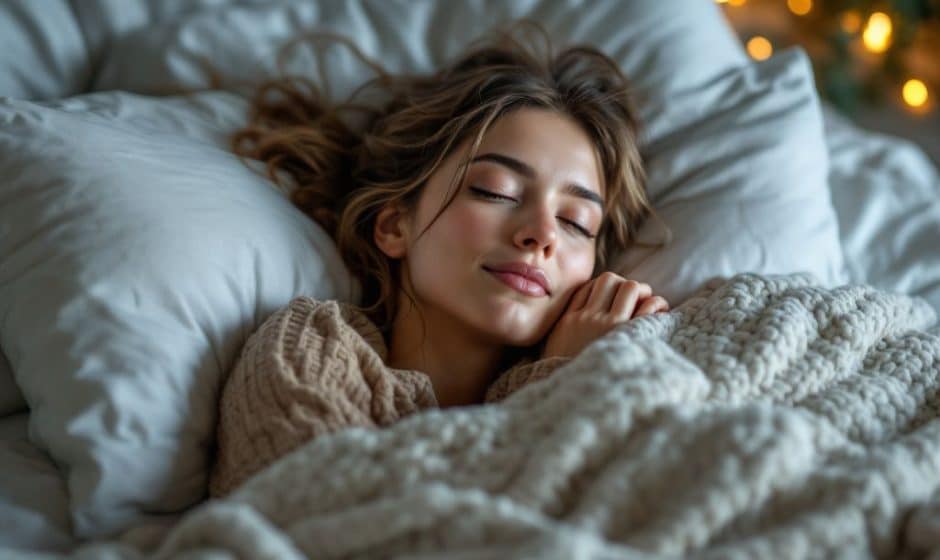Have you ever been snuggled up in bed, right on the brink of slumber, and suddenly felt like your legs developed a mind of their own? Out of nowhere, it’s like they’ve decided an impromptu dance party is in order. Welcome to the world of Restless Leg Syndrome (RLS), an irritating sleep intruder that seems to ignore your nighttime rules. You’re here because you’re yearning for sleep comfort, and together, we’re going on a journey to understand RLS, explore hormone regulation, and uncover how to find relief from this restless condition.
What Is Restless Leg Syndrome Anyway?
Right away, let’s break down what exactly we’re dealing with here. Restless Leg Syndrome is a condition characterized by an uncontrollable urge to move your legs, usually due to an uncomfortable sensation. It’s often, but not solely, encountered when you’re lying down or sitting during late evening hours. These sensations not only vary from person to person but can feel like creeping, crawling, tingling, or aching.
Sounds bizarre? It is. It’s one of those conditions that you “have to experience to understand” because try explaining “feeling like there are fizzy soda bubbles popping inside your calves” and watch the confused faces appear.
But here’s what ties it all together. RLS messes with sleep comfort. Since the symptoms usually intensify during rest or relaxation, this makes it a nemesis to anyone just looking to catch some Z’s without drama.
How Hormone Regulation Plays a Role
Well, let’s dive into the fine print: how hormone regulation intertwines with RLS. Hormones? In my legs? Yep! The regulation of hormones, particularly dopamine, has a substantial impact on this condition. Dopamine is a well-known player in muscle movement and control; fluctuations can lead to the manifestations of RLS.
*Let’s get a bit geeky for a minute*. In the nervous system pipeline, dopamine’s role ensures signals run smoothly along the rails, keeping our muscle movements steady. Disruption here, whether due to hormones or external factors, can mimic chaotic train traffic—i.e., restless legs.
Could It Be a Case of The Blues?

Dopamine isn’t the only pigment on the hormonal palette. Hormones related to mood, like serotonin, can also pull strings leading to increased RLS symptoms. You know how being emotionally stressed or mentally overwhelmed can weigh on your body? RLS loves to add an encore during those moments.
RLS Relief: Finding Your Sweet Spot
Quickly onto the big question: what can we do about it? Finding RLS relief is more than just a pipe dream. Let’s piece together some strategies because, after all, we’re angling for that blissful sleep comfort.
Adjusting Lifestyle and Environment
- Evening Rituals: Establishing a calm, consistent bedtime routine can do wonders for sleep comfort. Self-care isn’t just mainstream fluff, it helps hormonally prepare your body for rest.
- Stay Active: Incorporate moderate daily exercise, just avoid doing it too close to bedtime. Your muscles don’t need a pre-bedtime fitness pep talk.
- Mind Your Diet: Certain foods and beverages can tinker with those hormones, specifically caffeine and alcohol. Minimizing their consumption, particularly in the late hours, might yield peaceful results.
- Hot or Cold Therapy: Simple solutions like using a heating pad or a cold compress on your legs can temporarily ease sensational leg movement.
Relaxation Techniques That Actually Work!
Dive into relaxation techniques: gentle yoga, meditation, or even deep-breathing exercises might become your sleep buddies. These practices have a knack for regulating hormones and soothing jittering nerves.
Sleeping Environment Matter More Than We Know

Giving thought to your physical sleeping space holds surprises—like finding the perfect mattress firmness or experimenting with leg elevation. Remember, your bed should feel like a welcoming hug, not a wooden board reminding you of unfinished tasks.
A Word on Medical and Natural Treatments
Sometimes lifestyle and environment tweaks might not cut the cake and that’s perfectly okay.
Exploring Medical Options
Consult your healthcare provider if persistent RLS significantly interrupts your life. They may consider medications that help increase dopamine levels or others that address underlying conditions like iron deficiency.
*Here’s a bit more.* Hormonal fluctuations can lead to nutrient imbalances. Get blood work done to rule out deficiencies that contribute to RLS, like iron or B vitamins. An unexpected blood level might just be the missing piece to your RLS puzzle.
RLS Relief: Alternative and Complementary Approaches
Besides medications, alternative remedies balance the hormone scales and tend to RLS naturally:
- Magnesium and B12 Supplements: Some users find magnesium effective. It plays a cool supporting act in muscle relaxation and soothing, though always discuss supplements with a healthcare provider.
- Acupuncture: Prod those pressure points which might help regulate nervous dysfunction—though more scholarly evidence is continually marinating.
Story Time: Patients & Patience

I’ll share something from a reader whose journey through restless nights led to an unexpected daytime result—getting into jigsaw puzzles. “Focusing my mental strain elsewhere helped me manage the anxiety and urge during night episodes particularly when knowing that bedtime was coming.” This informs us about finding joy to relatably combat the compounded woes of RLS.
Addressing Persistent Sleep Disruptions
When RLS isn’t the only stagger on your sleep quality, other conditions can exacerbate those restless legs:
- Sleep Apnea: The disruptive breathing condition can hyped-up our nighttime houseguest (RLS).
- Insomnia: The struggle to fall asleep—it’s a vicious companion that churns RLS cycles further. It becomes this butterfly effect you wish you could pause!
Finding oneself tangled in this web might make one ponder more than just hormone regulation, unearthing facets of health and habit previously sidelined.
Recap – It’s a Dance, Not a Sprint
Half the battle with RLS relief and other sleep disruptions is understanding that gradual improvements cumulatively amount to significant differences. Notice, it wasn’t a one-size-fits-all evening but multiple aspects colliding harmoniously across personal lifestyle and hormone regulation aspects.
Consider changing one or two things at a time and absolutely, give patience its due day in court. The pursuit of sleep comfort isn’t linear; it’s as challenging as realizing some nights carry the victory and others nudge humility closer.
But hey! Savor those triumphant nights when you do sink into bliss without uninvited dancers tagging along for the joyous ride. 😊 Keep engaging in this sleeping artistry, since balancing hormone dance tracks aren’t going out anytime soon.
Frequently Asked Questions
What causes a hormonal imbalance?
A hormonal imbalance can be caused by natural changes or stages in life, including puberty, pregnancy, perimenopause, and menopause. Other factors such as genetics, aging, increased daily stress, poor nutrition, and lack of proper activity and fitness can also contribute to hormonal imbalances[3][5].
What are the signs and symptoms of a hormonal imbalance?
Signs and symptoms of a hormonal imbalance can include irritability and fatigue, mood swings and depression, skin dryness and loss of elasticity, water retention and weight gain, osteoporosis and joint pain, less interest in sex, insomnia and other sleep disorders, and memory issues and difficulty concentrating[3].
How can hormone replacement therapy help with hormonal imbalances?
Hormone replacement therapy can help by stabilizing and increasing hormone levels, alleviating symptoms such as hot flashes, night sweats, and mood swings. It can also improve sleep, increase energy, enhance memory, and protect joint and bone health. Bio-identical hormone replacement therapy, in particular, uses hormones identical in structure to those produced by the human body and may have fewer side effects than traditional hormone replacement therapy[1][3][5].
What are some natural approaches to achieving hormonal balance?
In addition to hormone replacement therapy, natural approaches include dietary changes such as consuming clean proteins like nuts and beans, lean proteins like organic pasture-raised chicken and fish, healthy fats like coconut oil, and leafy vegetables rich in antioxidants. These foods can help maintain a healthy endocrine system and balance hormone levels[1][4].
References



